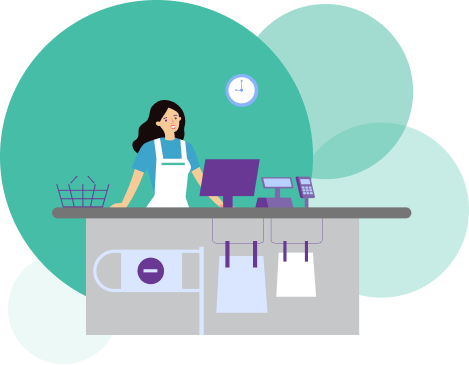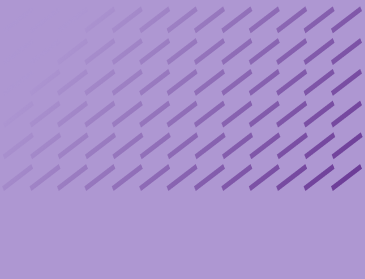Words carry a lot of weight
There is a lot of unconscious bias in our society. You may not have biases (or may think you don’t), but biases exist, and the words we use in documentation may perpetuate bias in the information receiver, regardless of the intent behind it.
At CareAlign, we have implemented changes to our platform to help make it easier to use more neutral language in charts and labs for better patient care.
What is unconscious bias?
Unconscious bias is an automatic and unintentional thought about a person, idea, or thing that can impact thoughts, decisions, and actions. Before we delve further into unconscious bias and its’ impact in healthcare, lets start by defining a few key terms around the subject.

Unconcious bias
is an automatic and unintentional thought about a person, idea, or thing that can impact thoughts, decisions, and actions.

are unintentional actions or words that discriminate against a group of people. Microaggressions may occur because of unconscious biases.


People can have unconscious biases about others based on race, ethnicity, gender, age, socioeconomic status, education levels, sexual orientation, and more.
When this bias is acted upon, it can lead to microaggressions and discrimination. Oftentimes, underrepresented or minority groups that do not traditionally hold positions of power are most impacted by unconscious biases.
Unconscious biases are prevalent:

Unconscious biases are shaped by people’s surroundings, and oftentimes, people don’t know that they have them. And healthcare experiences biases just like everywhere else. In a systematic review, almost all studies included in the review found evidence that physicians and nurses have unconscious biases at similar levels to the general population. Even if you don’t have biases, people around you might.
Why does this matter?

Unconscious biases become a bigger issue when they impact how we perceive, talk about, write about, and act towards a person, thing, or idea. This impacts how you interact with the person, and how you talk about the person to other people. Discrimination and prejudicial behavior are obviously wrong, and we don’t think we need to explain that further. But there are other ways that unconscious bias impacts people that we want to mention.
Unconscious bias can lead to self-fulfilling prophecies for those being biased against. Self-fulfilling prophecy is when a person or group’s expectation of another person or group serves to actually bring about the expected behavior.
A study on self-fulfilling prophecies
There’s an interesting study about this done at a grocery store. At the grocery store, cashiers from minority and majority groups have about the same job performance. But when cashiers from minority groups are working with managers who are biased, the cashiers spend less time at work and are slower at doing their job. On days when managers are unbiased, the minority group cashiers do their job significantly better than majority cashiers. They found that this was related to the hiring practice, because biased managers believe that minority cashiers underperform on the job, and they therefore create higher hiring standards for minority cashiers. You can read the full study here
This shows an example of biased behaviors leading to self-fulfilling prophecy. The minority cashiers know the biased managers think they are worse at the job than the other cashiers, so they don’t perform as well as they normally do. While this is a very specific example, it can be applied to other situations in which people are biased against others.
Unconscious biases can impact people’s mental health. One study found a correlation between microaggressions and poorer mental health for American Indian/Alaska Native patients. Other studies have found discrimination-related stress is associated with mental health issues in both adults and children. Unconscious biases can have a wide-ranging negative impact on those receiving the biased actions and words.
Why does unconscious bias matter in medicine?
Unconscious biases can impact how clinicians interact with patients, and the type of care that patients receive. Clinicians often work in stressful environments with lots of time constraints where they need to be efficient and make quick decisions. When people are tired, pressured, or anxious and need to make quick judgment calls, they often rely on their autonomic nervous system to make decisions. This sometimes means that bias and stereotypes unintentionally impact decisions, leading to unfair treatment of people in minority groups. But this bias can also perpetuate in how clinicians talk (or write) about patients.
One study looked at medical students and residents attitudes towards a patient and treatment plans prescribed for a patient. Some of these clinicians saw a note with neutral language, while the other note used stigmatizing language that did things that subtly portrayed the patient negatively. They found that seeing the stigmatizing language note was associated with more negative attitudes towards the patient and less aggressive pain management.
Another study looked at the type of stigmatizing language in charts, and found that the most common stigmatizing language fell into a few categories: questioning patient credibility, disapproval of patient reasoning or self-care, stereotyping by race or social class, portraying the patient as difficult, and emphasizing physician authority over the patient. Not only do clinicians carry their own biases that could potentially impact care, but they can also pick up biases from stigmatizing languages in patient charts or through conversations with clinicians about a common patient.

Clinicians go into medicine because they want to care for patients. And the vast majority try to provide equitable care to all their patients. But even these well-meaning clinicians can have biases. So what can we do to help mitigate unconscious bias? It takes a team effort, with clinicians becoming aware of and then learning strategies to mitigate how their biases impact their words and actions (see our additional learnings section for more resources). But technology also has a role in helping.
Before we move on to the next section, we wanted to make a quick note. While a lot of this section is focused on how clinician and healthcare worker bias can impact patients, we want to acknowledge that clinicians also face bias from their co-workers and patients. For example, how many women physicians have been asked by a patient when they can see “the doctor”? Their are strides to be made to make healthcare more respectful and inclusive for those caring for patients.
CareAlign believes health equity is a top priority, and we are taking action. Our CEO, Dr. Subha Airan-Javia, and colleagues did research on stigmatizing language in patient charts. They found that the words “compliance” and “cooperative” decreased in frequency as patient age increased, but the words “agitated” and “refused” increased in frequency for patients over 80. They also found that the words “compliance” and “cooperative” were used more frequently in notes for transgender patients than cis-gender patients.

We are excited to announce that to help address stigmatizing language in clinical documentation, CareAlign has implemented nudges into our platform. Based on prior research by our CEO and using language guides from the CDC and APA, we have generated a library of words to avoid, and created a process to detect when these words or phrases are written. When clinicians enter a word in a patient chart that can create bias, the clinician gets a nudge that suggests different words that could be used instead of the stigmatizing word and a reason why this new word is more neutral.
Our hope is that these nudges will not only reduce stigmatizing language in charts, but also help clinicians get better at self-monitoring their own thoughts and words for unconscious bias. A study that looked to reduce abbreviations in charts compared forced correction alerts, auto-correction alerts, and a control group to see if the alerts reduced abbreviations. The physicians who had the forced correction alerts had the greatest reduction in use of abbreviations, with the alerts modifying their writing behaviors.
our work with health equity here:





